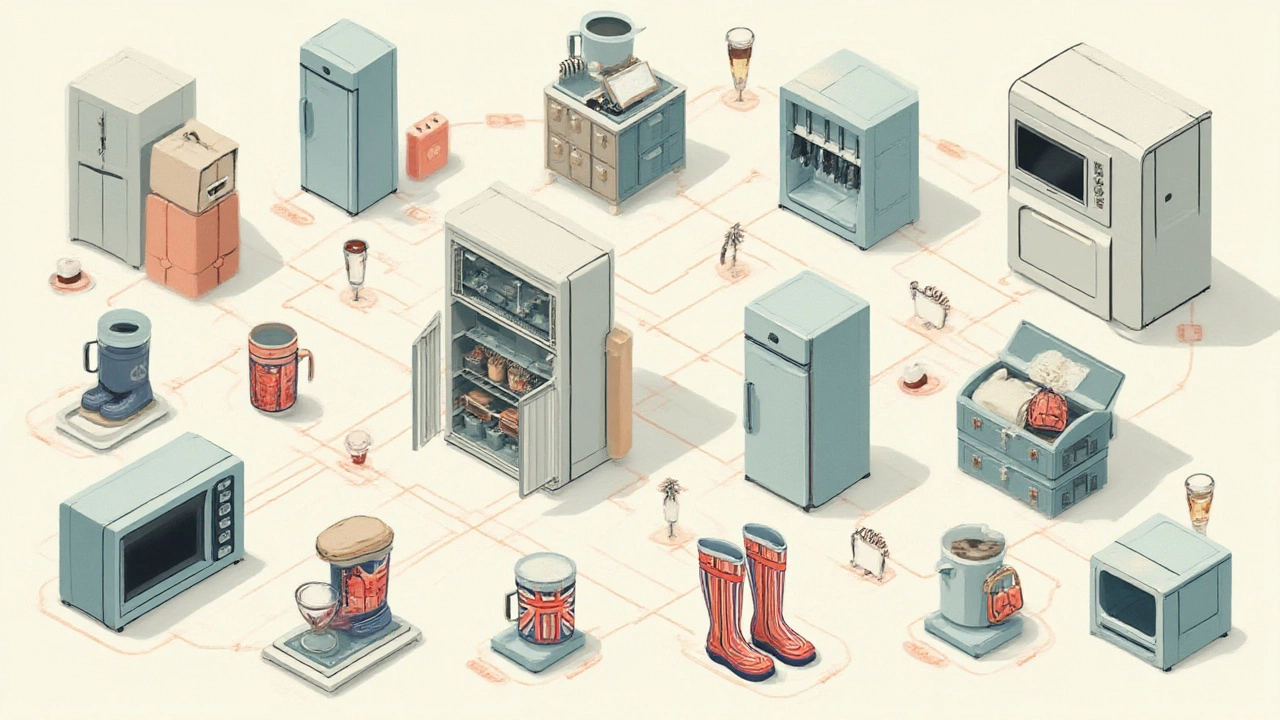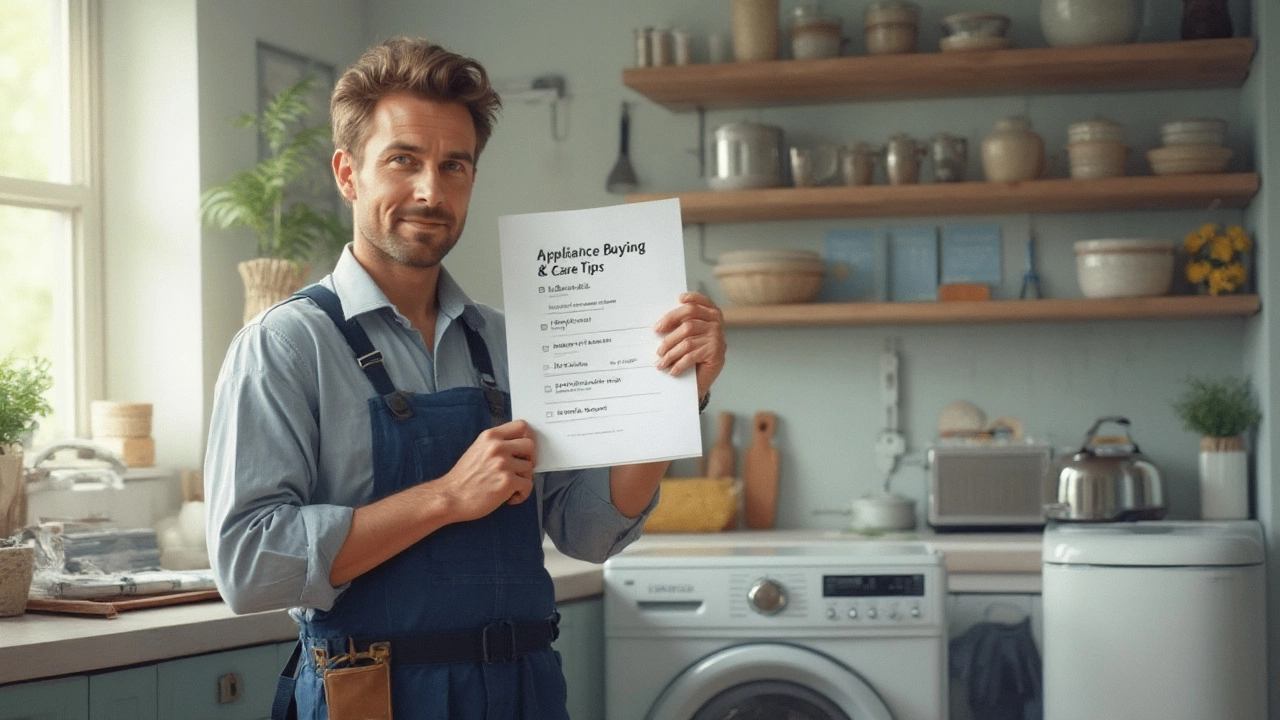Ever looked around your house and wondered what actually counts as an appliance? It’s not as obvious as it sounds. Sure, the fridge in your kitchen and the washing machine in the laundry are for sure appliances—but what about the toaster, or that little rice cooker in the cupboard? Even some people in the business world throw around the term “appliance” when talking about huge pieces of commercial gear, while regular folks often mean the machines they can’t imagine their kitchens or laundry rooms without. Getting this right isn’t just about being pedantic—knowing what qualifies as an appliance can affect your warranty, insurance, repairs, and what you list when you’re selling your home. So let’s cut through the clutter and give you the details.
How Experts Define an Appliance
If you ask three people to define an appliance, you might get three wildly different answers. The Oxford Dictionary plays it safe: "a device or piece of equipment designed to perform a specific task, typically a domestic one." That gives you a lot of wiggle room, but for folks in the industry—like electricians and insurers—an appliance is a machine, usually powered by electricity or gas, that performs a household function. We’re talking about anything that heats, cools, cleans, cooks, washes, dries, or preserves food. The key is that it does its job (mostly) automatically—you don’t have to hand-crank your food processor or manually wash clothes in your dishwasher, right?
Still, not everything with a plug counts as an appliance. Lamps? Nope, usually not. Fans? Sometimes, depending on how powerful or built-in they are. In the UK, for example, built-in hobs and ovens are considered 'appliances' for insurance and home sale purposes, while handheld blenders are usually just 'small electricals.' Meanwhile, in the US, mortgage lenders have their own list—refrigerators, stoves, and dishwashers make the cut, but sometimes the microwave doesn’t.
Here’s a quick table showing how a few common organizations classify household items:
| Item | Home Insurance | Real Estate Listing | Repair Warranty |
|---|---|---|---|
| Refrigerator | Appliance | Appliance (Often Included) | Covered |
| Microwave (Built-in) | Appliance | Appliance | Covered |
| Microwave (Portable) | Not Always | Not Guaranteed | Maybe |
| Toaster | Small Electrical | Excluded | Not Covered |
| Cooker (Built-in) | Appliance | Appliance | Covered |
If you’re ever in doubt about whether something is an appliance for insurance, warranty, or sale purposes, check how it's wired and used. If it’s permanently installed (like a built-in oven), it probably counts. If you pop it in and out of a cupboard (like a blender), it usually doesn’t.

Big vs. Small: Breaking Down Types of Home Appliances
When people hear “appliance,” their brains usually go straight to “major appliance”—think big, heavy, tough-to-move machines stuck in the kitchen or laundry. There are official names for these: they’re called “white goods,” and they include the classics like refrigerators, cookers, washing machines, dryers, dishwashers, and sometimes boilers. What makes an item a major appliance? Usually, it’s hooked up to your home’s wiring or plumbing, it’s bulky, and you don’t move it around much—basically, items you leave behind if you move house.
Now, over the last few decades, the line between major and small appliances has blurred a bit. Imagine microwaves: in the ‘80s, they were a luxury, sometimes even built into the cabinetry. Now, plenty are just another thing you pick up at the shop and plug in next to your kettle. Small appliances—sometimes called “brown goods,” even though hardly anyone uses the term anymore—cover a huge range: coffee makers, air fryers, mixers, slow cookers, toasters, and even gadgets like electric can openers. They’re portable, affordable, and much easier to replace. Still, just because something’s small doesn’t mean it isn’t essential. For someone who starts every day with toast, a broken toaster is a mini crisis.
If you want to keep your appliances running longer, here are a couple of honest tips:
- Don’t overload your washing machine or dryer. The motor works way harder, and repairs are pricey.
- Clean your dishwasher filter every month. That little bit of grime can clog up everything and ruin your plates.
- Defrost your freezer once or twice a year (unless it’s frost-free). Ice build-up can kill efficiency and cost you money.
- Pull out your fridge and vacuum behind it. Dust behind the coils can add 20% to your electricity bill.
- For small appliances, never run blenders or mixers longer than recommended. Motors can overheat fast.
Fun fact: a modern fridge uses about half the energy of a unit from the 1990s, but average households still use more appliances than ever before—a survey from Statista in 2024 said the typical UK home runs at least eight different kitchen gadgets weekly.

What’s NOT an Appliance (And Why It Matters)
This is where it gets tricky. A lot of folks think if something has a cord and a button, it’s an appliance. Not quite. Here’s a straight-up list of what usually doesn’t count:
- Light fixtures (ceiling lamps, table lamps, etc.)
- Computers, tablets, and TVs—these fall under electronics
- Portable fans, unless they’re huge or integrated
- Plug-in air fresheners and smart home hubs
- Tools like drills or electric screwdrivers
- Manual kitchen tools (not powered at all)
Why does this matter? For one, insurance companies are usually pretty specific: appliances get one type of coverage, electronics another, and furniture has its own separate thing. Selling your home? Buyers often expect major appliances to be included unless you specifically say otherwise. If you’re fighting for a warranty or repair, knowing if your broken gadget is classed as an appliance can be the difference between getting it fixed for free or shelling out cash for a new one.
Another tip: when you’re shopping for new appliances, keep an eye out for those energy labels. The EU, UK, and US all have energy rating systems—A+ (or in the US, ENERGY STAR) means you’ll save money over time. But don’t ignore the small print; some "smart appliances" claim to be energy efficient, but features like Wi-Fi connections or always-on touchscreens can actually use more power than you realize. During a recent survey by Which? magazine, shoppers found that fridges and freezers wasted the most energy when airflow was blocked by overstuffed shelves—something the manufacturer never points out.
It’s not always about size or tech, either—some surprisingly simple devices like a heated towel rail or a built-in extractor fan are classed as appliances when it comes to safety checks and repairs in the UK, because they’re wired directly into your home’s electrical system. If you ever hire someone to fix a major appliance, always check they’re certified—especially for gas appliances like boilers and cookers. Under UK law, these repairs must be carried out by engineers on the Gas Safe Register. Similar rules apply across Europe and North America for anything that connects to gas lines.
So, when you break it down, an appliance isn’t just a fancy or expensive machine—it’s anything designed to make household chores easier and faster, usually powered by electricity or gas, and often built to last years. Next time you wonder if that gadget belongs in the appliance category, remember—it’s about usage, installation, and how losing it would turn your daily routine upside down.

I am an expert in the services industry with a focus on appliance repair. My passion lies in understanding how things work and educating others in simple, engaging ways. This enthusiasm fuels my writing, where I delve into topics around appliance maintenance and troubleshooting. I aim to make these subjects clear and accessible to all readers.